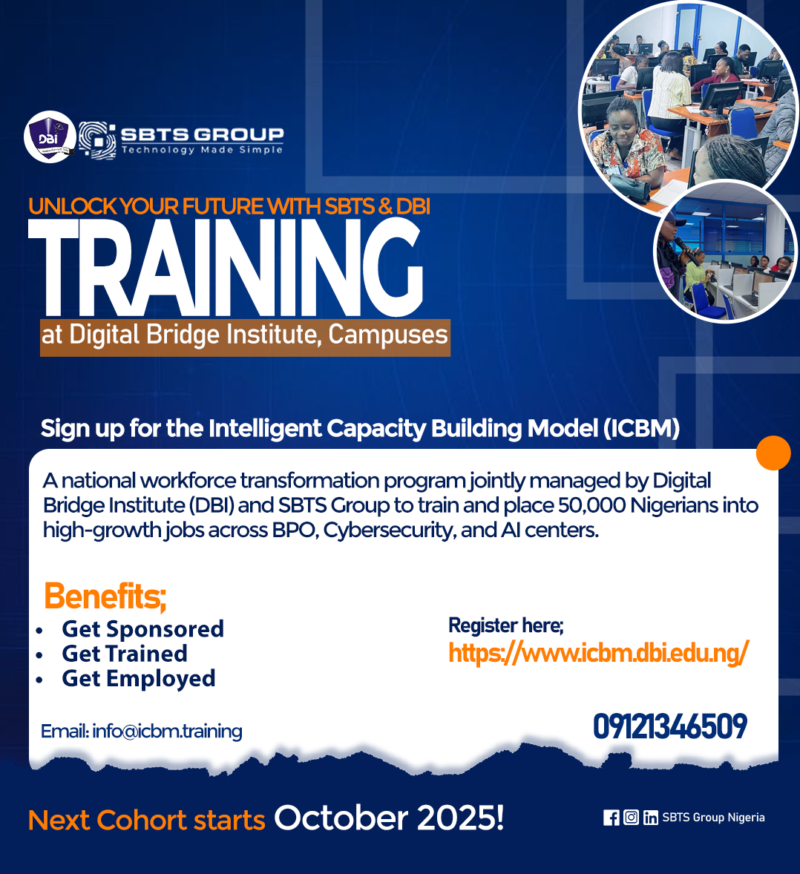Overview
- Developing digital skills is critical both for job success and to participate fully in a digital society. Such skills include generic competencies like searching online, communication via email, or instant messaging, as well as the ability to use work-related online platforms and knowledge of digital financial services.
- Tens of millions of future jobs in the online economy will require far more advanced digital skills. As such skills become increasingly important for employment, substantial “talent gaps” may emerge between workers proficient with information and communication technologies (ICTs) and those lacking ICT skills or familiarity.
- Gaps in qualifications are exacerbated by socio-economic inequities for many people, such as the lack of Internet access at home, limited training opportunities, outdated mindsets, and unequal financial situations.
- The digital divide is also a skills divide. The Internet user gap – the disparity between the numbers of people with access to, and those using, the Internet – can mostly be explained by education and skills. One of the main barriers to Internet uptake in developing countries is people’s lack of capacity and skills to use online platforms and resources to best advantage.
- Although young people have been called “digital natives”, most of them still lack sufficient job-relevant digital skills to fill vacancies. According to a recent ITU report (Measuring Digital Development: Facts and Figures 2021), 40% of individuals in 40% of countries surveyed reported carrying out an activity that requires basic digital skills in the last three months.
- The COVID-19 pandemic has boosted digitization. But it has also exposed severe challenges in connecting households and people, as well as the need for digital skills to participate effectively in the online world. Demand for digitally skilled workforces and the need for a digitally competent population have increased in the face of the pandemic.
- To build a more inclusive digital society, the International Telecommunication Union (ITU) urges governments, the private sector, academia, and other key stakeholders to act promptly to equip citizens and workers with the necessary digital skills and capacities for the job market and civil life.
OPPORTUNITIES
Digital skills are key to digital transformation and a significant enabler of each country’s digitization. Instilling the necessary skills has become a key part of national digital transformation strategies.
Strengthening digital skills will narrow the global digital divide. Among the main reasons why people are not using the Internet in developing countries is the lack of capacities and skills, either to use technologies or to benefit from the information and services available online. Enhancing citizens’ digital capacities serves to boost Internet use.
Job seekers with digital skills generally have greater success in finding employment. In Europe, for example, nine out of ten future jobs will require digital skills. In sub-Saharan Africa, over 200 million jobs will require digital skills by 2030, creating the need for almost 600 million training opportunities, according to a 2019 study by the International Finance Corporation (IFC).
According to the International Labour Organization (ILO), ICT-related industries saw the strongest growth in employment during the pandemic. Demand for digitally skilled workers will continue to grow as the digitization accelerates across all industry sectors. While automation and economic disruptions could end many current jobs, new jobs will emerge in the field of digital technologies. In addition, many other jobs will require digital skills, ranging from basic to advanced.
As digitization spreads, so does the need in each country or region for digital infrastructure and skills. The new tools, solutions, platforms, and services that have mushroomed since early 2020 will remain part of the new normal after the pandemic. The areas, sectors, and occupations where digitization stimulates job creation will inevitably require increasingly advanced digital skills, knowledge, and capabilities. In the meantime, the transition is creating huge investment opportunities in training and skilling. The education, training and learning sectors must expand to cater to these needs.
CHALLENGES
As advanced digital skills become more important for employment, some experts foresee a “talent gap” for workers with or without advanced digital competencies. The growing need for ICT-qualified workers is exacerbated by various socio-economic inequities, such as the lack of Internet access for many people at home.
Even before the pandemic, digital skills gaps existed in both developed and developing economies, with different wage levels and job options for workers with basic, intermediate or advanced skills. Green and digital transitions could create about 60 million new jobs worldwide over the next five years – and an estimated 1 million in the EU by the end of the decade (European Commission, 2020).
The APEC (Asia-Pacific Economic Cooperation) Closing the Digital Skills Gap survey shows 75 percent of respondents – comprising employers, government officials and academics – noting a significant skills mismatch, while over half say government agencies have a weak understanding of the digital skills landscape.
An estimated 37% of the world’s population is still not using the Internet at the end of 2021, according to the ITU data. In developing countries, some 43 per cent of the population remains offline, rising to 73% in the world’s 42 least developed countries (LDCs). This stands in stark contrast to the highly digitized economies and societies seen in middle- and higher-income countries.
Over two-thirds of the world’s school-age girls and boys aged 3-17 years (1.3 billion children) and 63% of youth aged 15-24 years (some 760 million youth) lack Internet access at home, according to the joint UNICEF/ITU report How Many Children and Youth Have Internet Access at Home. Globally, 2.2 billion children and young people aged 25 years or under do not have access to the Internet at home. In LDCs, only 22% of households have Internet access at home, compared with 86% of households in developed countries.
One of the main barriers to Internet uptake is people’s lack of capacity and skills to use online platforms and resources to best advantage. The digital divide reflects other existing skills and education divides among populations. Usually, more marginalized groups, including women and girls, are less skilled and educated. Education levels are low in many low-income countries, resulting in lower capacities for reading, writing and languages. The usage gap – i.e., between people’s access and actual use of the Internet – is widest in LDCs.
The digital skills divide also becomes evident as a gender divide. The gender gap among Internet users is largest in low-income and least developed countries. Girls and women often tend to be less educated or digitally illiterate in those countries.
ITU’S CONTRIBUTION: HELPING STRENGTHEN DIGITAL CAPACITIES
Training and capacity development for ICT professionals:
- The ITU Academy is the main e-learning platform for the UN tech agency. It offers more than 100 training courses covering a large variety of ICT-related topics every year. Courses are delivered by ITU or one of its many training delivery partners. The ITU Academy currently has over 25 000 users and continues to grow.
- The ITU Centres of Excellence (CoE) programme delivers training for ICT professionals around the world in the latest digital technologies, policies and applications. The programme currently operates through 29 CoEs across different regions. Courses are offered online, face-to-face or in blended form.
Basic and intermediate digital skills training for citizens and marginalized groups:
- The ITU Digital Transformation Centres (DTC) Initiative, launched with Cisco in 2019, aims to strengthen people’s digital capacities, particularly in underserved communities. The DTCs form part of a global network of institutions aiming to accelerate digital tech uptake among citizens, as well as to boost the capacity of young entrepreneurs and small and medium-sized enterprises (SMEs) to succeed in the digital economy. Over 100 000 people (of which 64 per cent were female) have been trained in basic and intermediate digital skills through the Initiative. The second phase (set to kick off in January 2022) involves 13 DTCs located in Africa, the Americas, and the Arab and Asia-Pacific regions.
- “Tech as a Driver of Women’s Economic Opportunity” project aims to enhance the digital ecosystem and build digital skills for women in LDCs. The project, a contribution to the EQUALS Global Partnership for Gender Equality in the Digital Age, uses technology to drive women’s economic opportunities in the textile and apparel industries, as well as the coffee and tea value chains. It has helped local women in Ethiopia, Burundi, and Haiti to benefit from the new possibilities that come with access to digital technologies. The project also works with national policymakers to “mainstream” a gender perspective in domestic policies and ensure women can participate in the digital economy.
Digital skills investments for young people:
- The ITU-ILO Digital Skills Campaign, launched in 2017, aims to equip 25 million young people with job skills by 2030. To achieve this goal, the campaign encourages partners to make commitments to invest in digital skills development for young people. So far, the campaign’s partners have made commitments to train over 15 million young people by 2030.
Tools and guidelines for designing and implementing digital skills strategies:
- The ITU Digital Skills Toolkit gives policy-makers and other stakeholders practical information, examples, and guidance to develop a national digital skills strategy.
- The ITU Digital Skills Assessment Guidebook is a tool for national digital skills assessments. It can help to determine the existing availability a digitally skilled cohort at the national level, assess skills demand from industry and other sectors, identify skills gaps, and devise policies to address future digital skills requirements.
- The Digital SkillsInsights publication, featuring scholarly articles highlighting the impact of digital transformation on capacity and skills development, strives to contribute to informed policy debates and decisions among policy-makers and regulators, as well as help the private sector anticipate and plan for human capital and skills requirements, especially to remain competitive in a rapidly changing digital environment.
Helping governments in strengthen their digital capacities:
- ITU is working with the United Nations Development Programme (UNDP) and the Office of the UN Tech Envoy to create a Multistakeholder Network (MSN) for capacity development. The network, launched in December 2021, aims to promote holistic, inclusive approaches to digital capacity development, ultimately aligned with global sustainable development. The MSN brings together partners from the UN and across the international community to raise awareness, improve access to products and services, and boost digital capacity.
- The ITU-UNDP Joint Facility for Capacity Development, launched in May 2021, mobilizes expertise in areas such as digital literacy and skills training, digital needs assessment, and programmatic support, in order to improve the accessibility of digital opportunities. The Joint Facility seeks to identify areas of unmet demand for digital capacity development initiatives, work with end users to identify where exiting services are not filling outstanding needs, and provide direct strategic, operational, and programmatic support in executing digital strategies, capacity development initiatives, or other high-priority operational areas for partners.
Courtesy: ITU





























